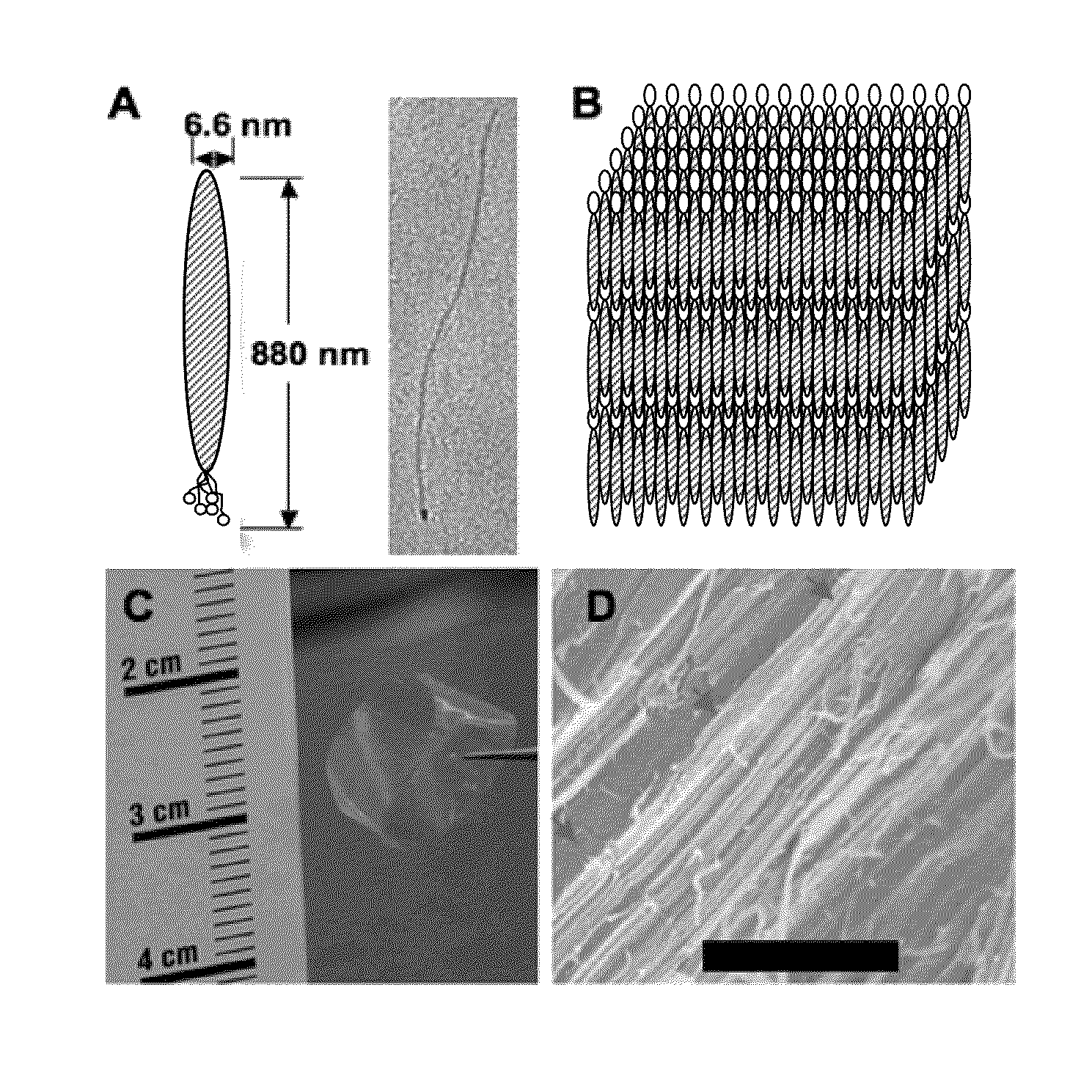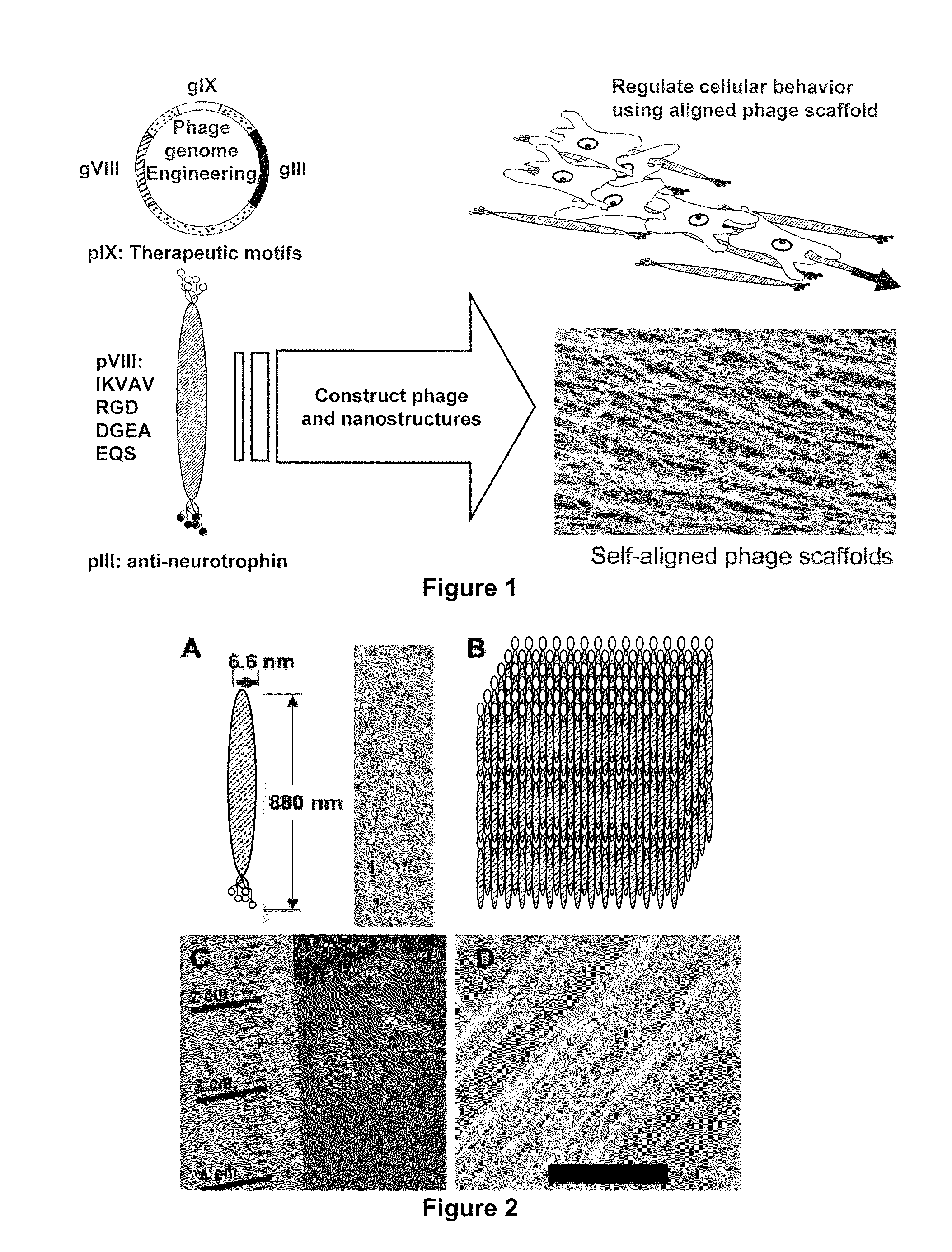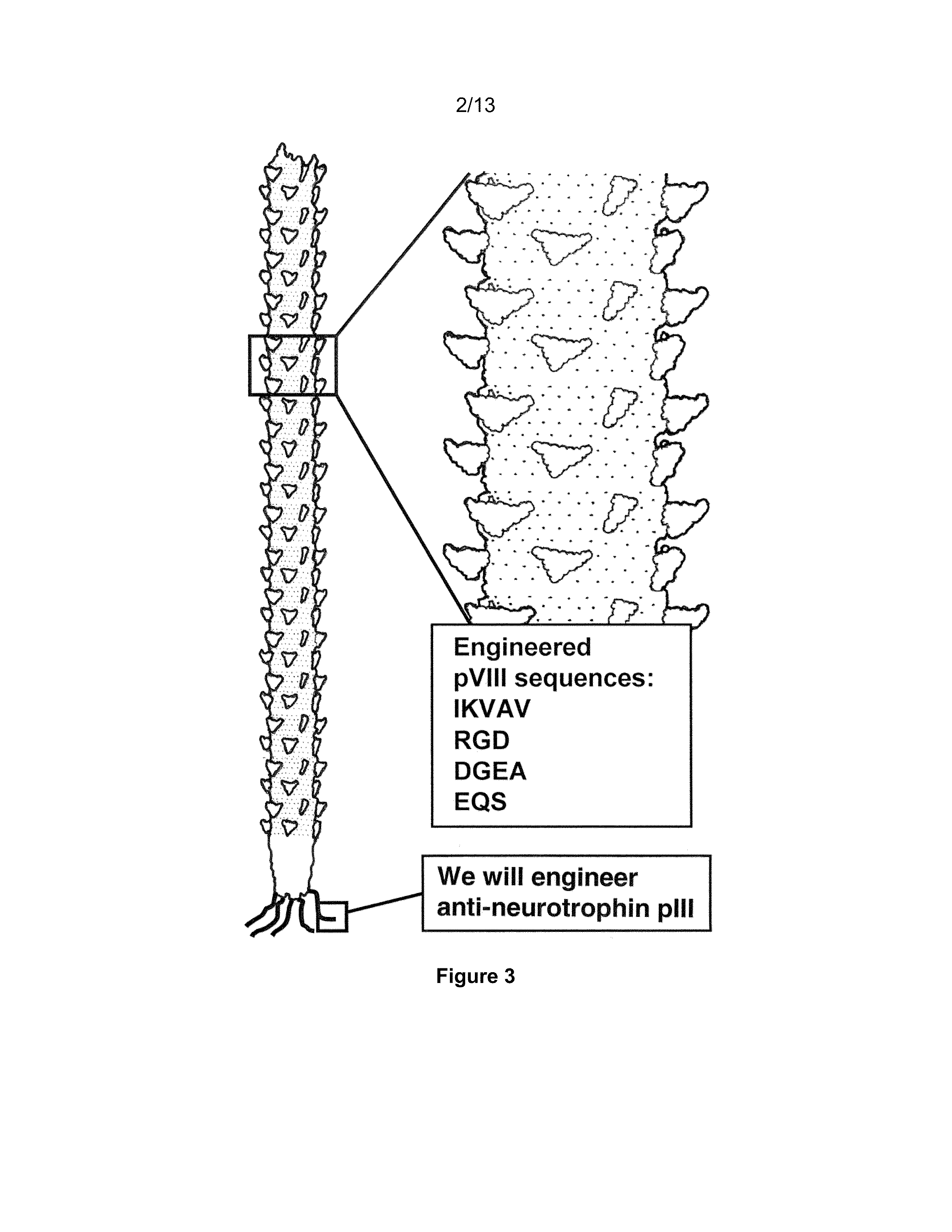Recombinant Bacteriophages Useful for Tissue Engineering
a tissue engineering and recombinant bacteriophage technology, applied in the field of tissue engineering recombinant bacteriophage, can solve the problems of large differences in the density of recombinant bacteriophage, the difficulty of ensuring the high density and proper spatial arrangement, and the lack of complete cure for neural regeneration
- Summary
- Abstract
- Description
- Claims
- Application Information
AI Technical Summary
Benefits of technology
Problems solved by technology
Method used
Image
Examples
example 1
Construction of Phage that Display Signaling Motifs
[0085]We constructed several engineered phage (FIG. 3) that displayed designated peptides at the N-termini of the pVIII major coat proteins, using methods similar to those previously reported (Nam, K. T., et al., Virus-enabled synthesis and assembly of nanowires for lithium ion battery electrodes. Science, 2006. 312(5775): p. 885-888; hereby incorporated by reference). The laminin motif IKVAV (SEQ ID NO:1) was displayed within the sequence AEDSIKVAVDP (SEQ ID NO:43) instead of the physiologically exact sequence AASIKVAV (SEQ ID NO:44). The fibronectin integrin-binding motif (RGD) was inserted within the sequence ADSGRGDTEDP (SEQ ID NO:45) instead of GRGDS (SEQ ID NO:46). The physiological sequence was initially desired but could not be successfully displayed and efficiently amplified due to disruption of the charge balances on the phage surfaces. The native pVIII molecule contains 3 negative charges within the N-terminal wild-type s...
example 2
Effects of the Phage Materials on Neural Cell Viability and Growth
[0091]In order to investigate the cytotoxic effect of the phage materials, we tested the individual phage as additives to the cell culture media and then tested drop cast films of the wild-type phage and phage displaying IKVAV- (SEQ ID NO:1) and RGD-motifs.
[0092]Neural progenitor cell cultures: We investigated the cytotoxicity of the engineered phage on neural progenitor cells. The neural progenitor cells used in these experiments were isolated from the hippocampi of adult female Fischer 344 rats, as previously described (Saha, K., et al., Biomimetic interfacial interpenetrating polymer networks control neural stem cell behavior. J Biomed Mater Res A, 2007. 81(1): p. 240-9; hereby incorporated by reference). The cells were seeded at a density of 3x103 cells / cm2 into 96-well plates with clear bottoms (Greiner Bio-One, Monroe, N.C.) precoated with polyornithine and laminin. They were grown in 100 μL serum-free DMEM / Hams...
example 3
Effects of Phage-Films on Cellular Viability
[0097]Through immunofluorescent staining, we confirmed that neural progenitor cells can adhere to the phage-films and stay viable while growing on the substrate. In addition, the cells maintained their progenitor state and differentiated when subjected to defined media conditions. In order to prepare drop-cast phage films, 304 droplets of 1012 phage / mL of either wild-type or genetically modified phage were deposited on vinyl cover slips (VWR) and allowed to incubate overnight at room temperature. Neural progenitor cells were seeded on the top of the phage films. After remaining in culture for 5 days, the cells were formalin-fixed, and the cover slips were double stained with anti-fd phage antibody (1:500) and anti-nestin antibody. FIGS. 7A-C shows the individual staining images from each antibody as well as a composite. These images show that the cells and phage material can be visualized concurrently. Using fluorescence imaging, we confir...
PUM
| Property | Measurement | Unit |
|---|---|---|
| Composition | aaaaa | aaaaa |
| Structure | aaaaa | aaaaa |
| Adhesion strength | aaaaa | aaaaa |
Abstract
Description
Claims
Application Information
 Login to View More
Login to View More - R&D
- Intellectual Property
- Life Sciences
- Materials
- Tech Scout
- Unparalleled Data Quality
- Higher Quality Content
- 60% Fewer Hallucinations
Browse by: Latest US Patents, China's latest patents, Technical Efficacy Thesaurus, Application Domain, Technology Topic, Popular Technical Reports.
© 2025 PatSnap. All rights reserved.Legal|Privacy policy|Modern Slavery Act Transparency Statement|Sitemap|About US| Contact US: help@patsnap.com



